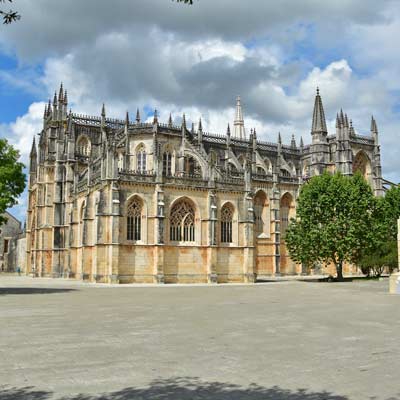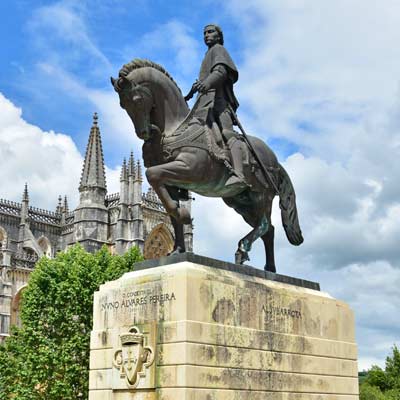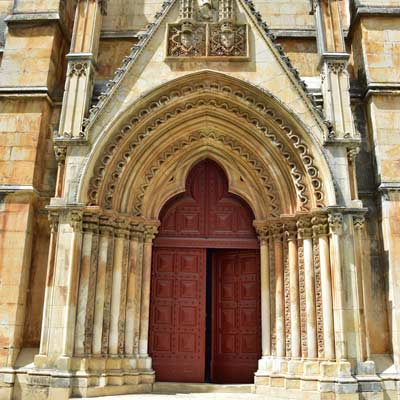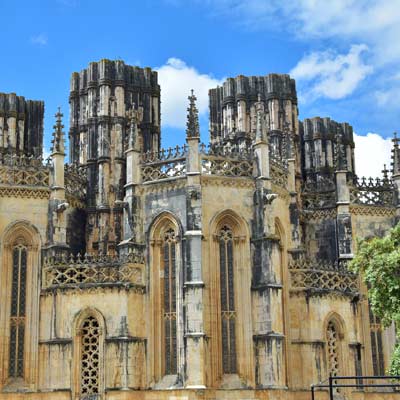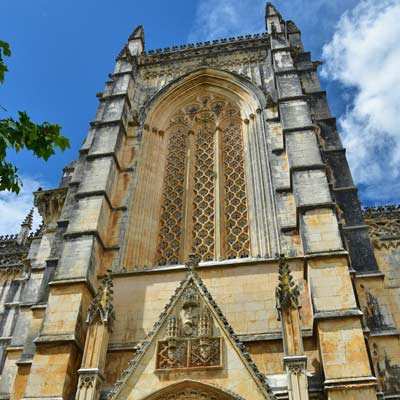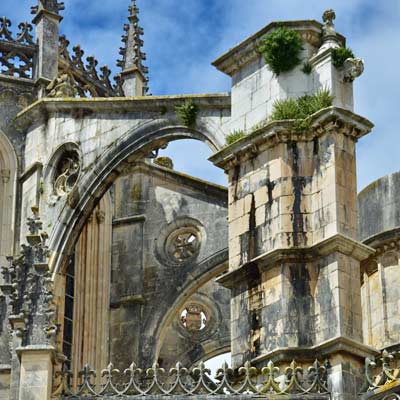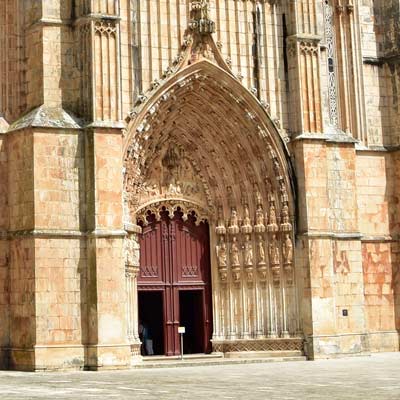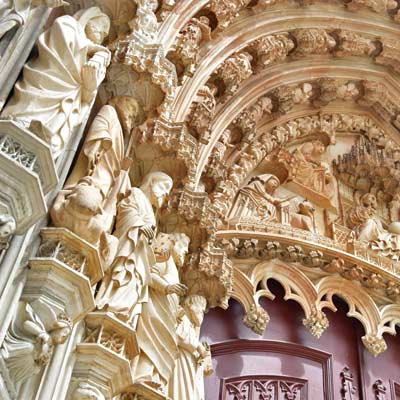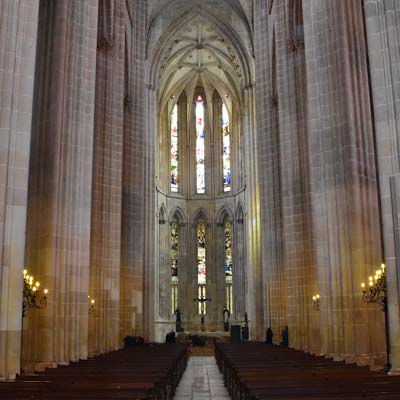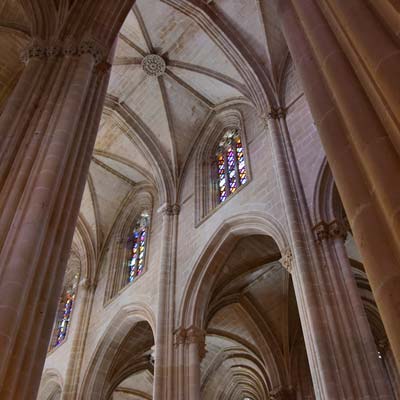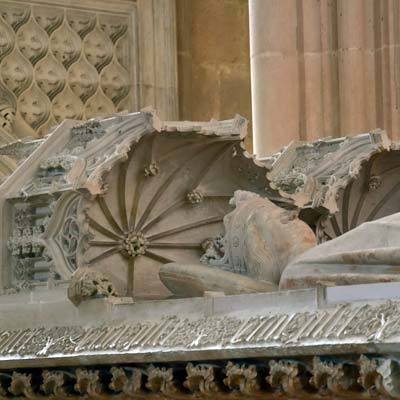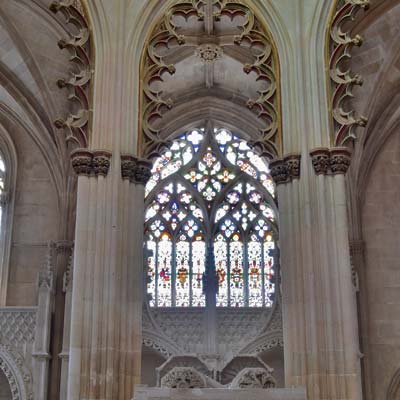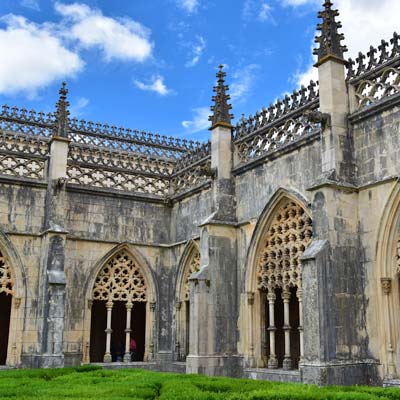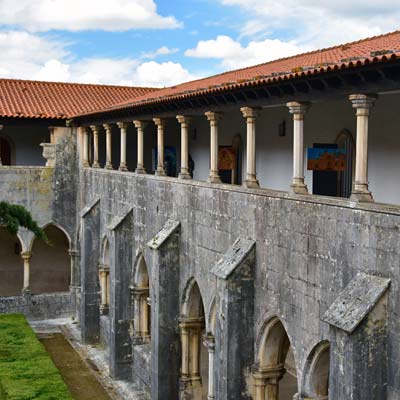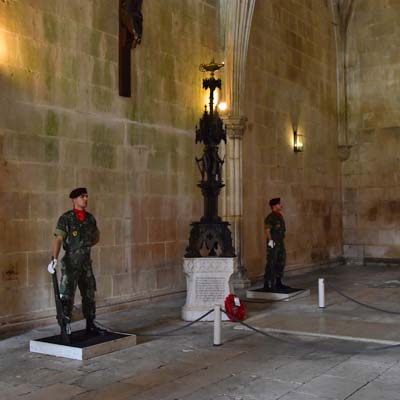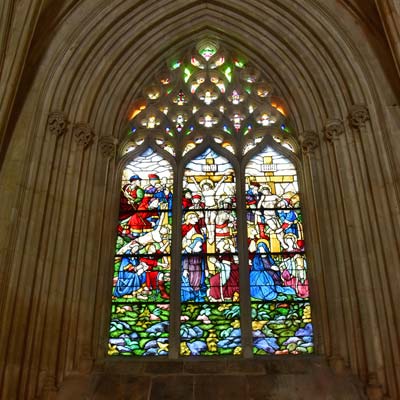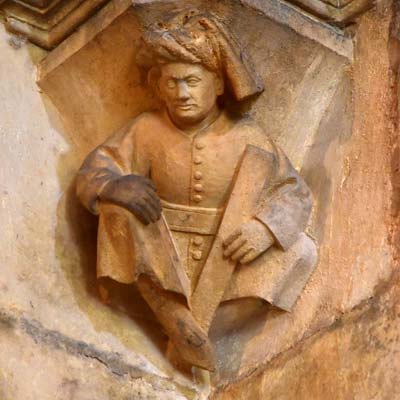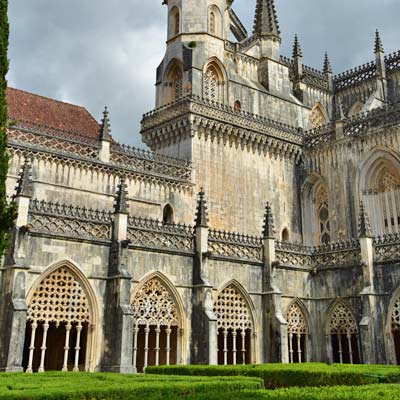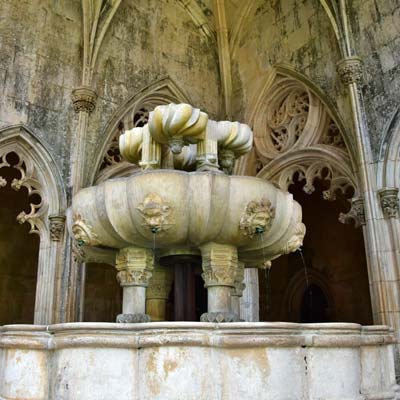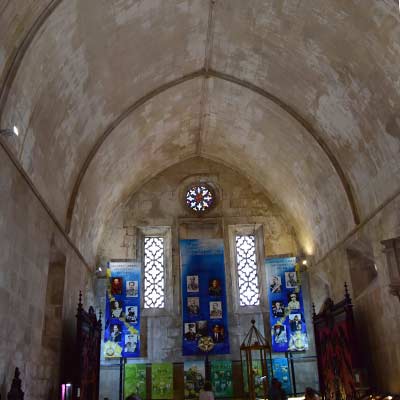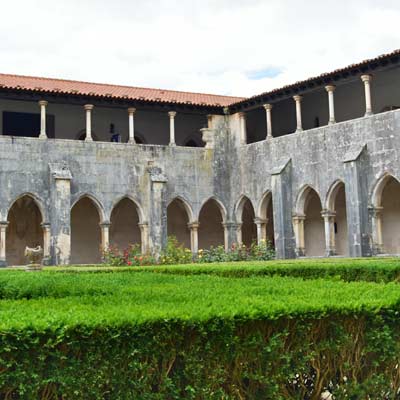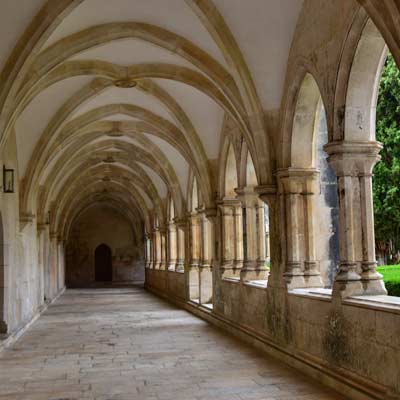MyPortugalHoliday.com
The best independent guide to Central Portugal
MyPortugalHoliday.com
The best independent guide to Central Portugal
Batalha Monastery (Mosteiro da Batalha) Image Tour and Guide
Born from a solemn vow made on the eve of battle, the magnificent Batalha Monastery is a monument to Portuguese independence. Its construction was ordered by King João I in gratitude for the pivotal victory at Aljubarrota in 1385, a battle that secured Portugal’s sovereignty from Castile and established the powerful House of Aviz dynasty.
For over a century, Portugal’s finest architects worked to create this masterpiece, which evolved from a pure Gothic style into a uniquely Portuguese art form. This glorious transition is best seen in the Flamboyant Gothic details of the Royal Cloister and the elaborate, sea-inspired Manueline carving of the magnificent Unfinished Chapels. Within, the Founder's Chapel stands as the solemn final resting place for King João I and his family, Portugal's first royal pantheon.
This guide provides an image tour and practical information for your visit, helping you explore one of the most historically significant and architecturally stunning monuments in all of Portugal.
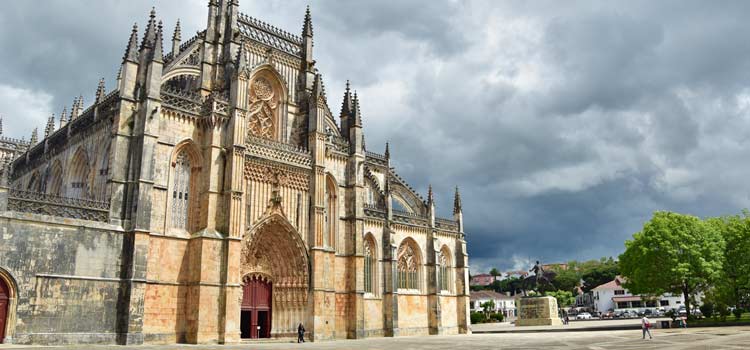
The magnificent Mosteiro da Batalha
Tourist Information Batalha Monastery
While the main church of the monastery can be entered for free, a ticket is essential to experience the architectural highlights contained within the main complex. The €8.00 admission provides access to the Founder’s Chapel, the two cloisters, and the magnificent Unfinished Chapels, with a free audio guide also included. To avoid long queues, especially during peak season, it is highly recommended to pre-purchase your tickets online before you visit.
Insight: Tickets for the Batalha Monastery (€15) can be pre-purchased here, to avoid ticket queues
To fully explore the entire monastery complex, you should allow a minimum of two hours. Be aware that many organised coach tours have rushed itineraries that may only allow time to see the church nave, bypassing the ticketed areas where many of the true treasures are found. An independent visit is therefore recommended.
Batalha's central location makes it a popular day trip, easily combined with nearby sites such as the monasteries of Alcobaça and Tomar, or the sanctuary at Fátima. For those with more time, a visit to the excellent museum dedicated to the Battle of Aljubarrota (Fundação Batalha de Aljubarrota) is highly rewarding, and the peaceful town of Batalha itself is a pleasant option for an overnight stay.
Image tour of the Mosteiro da Batalha
Most visitors arrive by coach and their first view of the monastery is across the Largo Do Mosteiro. At the centre of this plaza is a statue of Nuno Álvares Pereira (Estátua D. Nuno Alvares Pereira). He was the brilliant military commander who was credited for winning the battle of Aljubarrota and keeping Portugal as an independent country.
Before heading into the church via the main portal (on the western side) walk to the eastern side and view the Transept Portal and the exterior of the Capelas Imperfeitas (Unfinished Chapel). The stain glass windows above the Transept Portal are some earliest examples in Portugal and add a flash of colour to the sombre interior.
At the eastern end of the monastery the seven pillars of the Capelas Imperfeitas can be seen raising from the midst of the chapel. The Unfinished Chapel has elaborate Manueline stone carving and is the burial location for King Duarte I, but there is no roof!
An admission ticket is needed to enter the chapel, and the normal flow of the tour means it is the last section of the monastery to be visited.
On the walk to the main entrance on the western side of the monastery, observe the numerous pinnacles and flying buttresses. The flying buttresses are not just decorative and were designed to support the high vaulted walls of the Nave and the Founders Chapel.
The main portal is myriad of carved arches and wonderful stone statues, which covers most of the western wall. The lower statues represent the Apostles, above them are angels and at the pinnacle is a statue of Christ.
The interior of the church follows classic Gothic designs, with a Latin cross layout and minimal ornamental features. The two real features are the early examples of stain glass windows and the incredible height (32m), which is remarkable considering the church was constructed in the 14th century.
Ticketed section of the Batalha Monastery
The following areas of the monastery can only be visited with the admission ticket.
The Capela do Fundador (Founders Chapel) was the first royal pantheon of Portugal, and is one of the most stunning sections of the monastery. The unique octagon chamber contains the combined tomb of King John and his wife, Queen Philippa, with the tombs of their children lining the side walls.
The tour now visits the two cloisters, which were later additions to the church.
The first cloister is the Claustro Real (Royal Cloister) and often referred to as the Claustro de Dom João I (King John Cloister), and is the beautiful combination of Gothic arches with Manueline lattice stonework.
The second cloister, the Claustro Dom Afonso V (Cloister of King Afonso V) follows the conventional designs of medieval cloisters, and is much more austere.
On the eastern side of the Claustro Real, is the Sala do Capitulo (the Charter House), and was where monks would hold meetings and religious discussions. This chamber is impressive for medieval architecture, as it spans 19m and is unsupported. During its construction, the architects were so concerned about the roof collapsing that they only employed convicted criminals.
Today the Sala do Capitulo is the location for a memorial to the Unknown Soldier and has a permanent guard of honour. The single window in the chamber is a beautiful example of Renaissance stain glass and depicts the passion of Christ.
Before leaving the chamber, have a look at the (presumed) stone carving of Master Huguet, the architect responsible for the Charter House.
The refectory is vast but sparse, and was where the monks ate their meals in silence. Before entering for meals, the monks would symbolically wash their hands, and there is a beautiful fountain outside of the refectory.
Between the two cloisters is a long room, which was initially designed as a communal dormitory, but the Dominical monks believed in solitude, so the area was little used. This is the medieval example of a designer not listening to what user wants……
The Claustro Dom Afonso V is typical of other Portuguese Gothic monasteries, and could be considered rather plain in comparison to the extravagant Claustro Real. At it’s constructed the King Afonso V cloister was of a novel design, and was the first example of a double layer cloister in Portugal.
The final stage of the Batalha Monastery is to visit the unfinished chapel (Capelas Imperfeitas), which is to the rear of the main church. This section is possible to miss, as you must exit the monastery and cross the Largo Infante Dom Henrique to the small side entrance to the chapel.
The Capelas Imperfeitas was commissioned by Duarte I (King Edward) to be a royal pantheon for him and his family (the second of the church), but it was never completed due to the premature death of the king (in 1438) and then the death of the main architect, Mateus Fernandes. The chapel is one of the earliest examples of Manueline architecture, characterised by its elaborate stone carving, as seen on the stone pillars. Though the chapel was never completed, King Duarte’s tomb was placed in the Capelas Imperfeitas.
Discover more of central Portugal with our guides
If you've found our content valuable, we'd welcome your support.
The digital publishing landscape has evolved significantly. As a small independent publisher, we face growing challenges. Search engines increasingly favour paid content over organic results, while AI-generated content often reproduces original work without attribution.
To support our work, please consider bookmarking this page (press Ctrl + D) for quick access. If you find an article helpful, we'd be grateful if you'd share it with friends on social media.
For specific questions, please see our Reddit community at r/LisbonPortugalTravel.
Should you notice any outdated or incorrect information, please contact us at [email protected]
Thank you for helping us continue to provide valuable content in an increasingly challenging digital environment.
